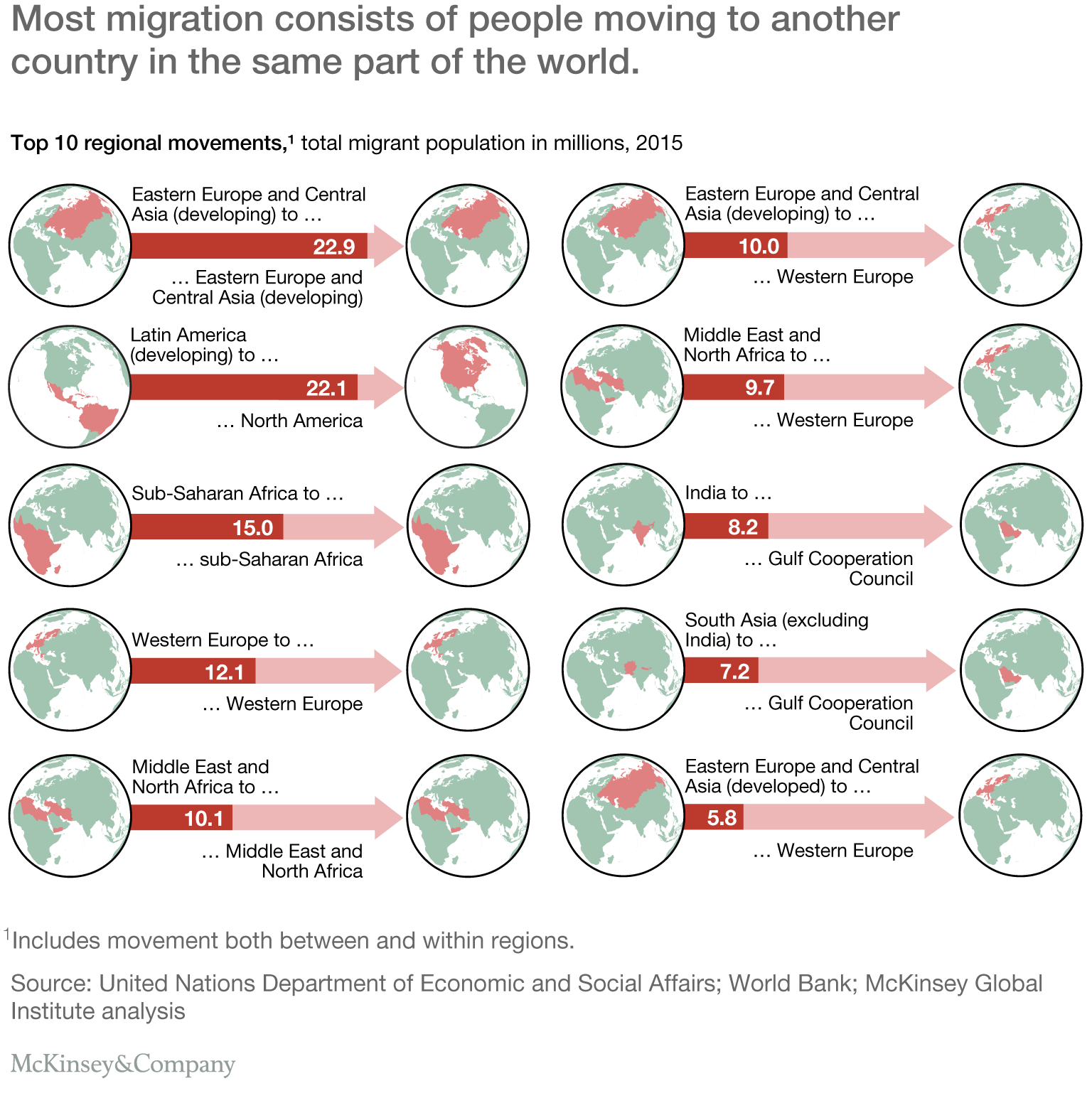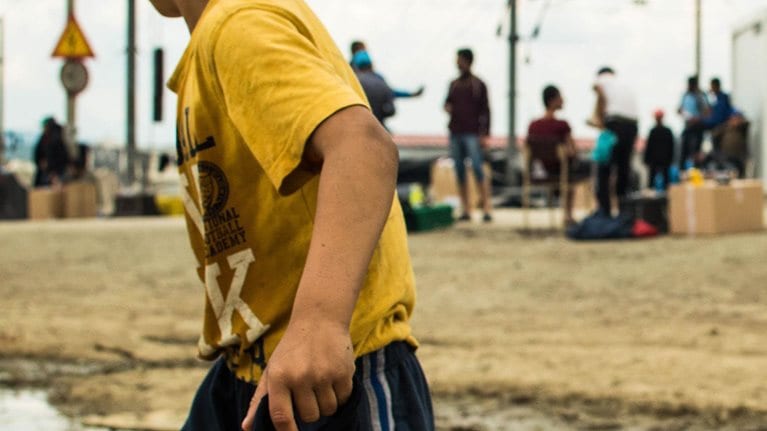Migration is a key feature of our increasingly interconnected world. It has also become a flashpoint for debate in many countries, which underscores the importance of understanding the patterns of global migration and the economic impact that is created when people move across the world’s borders. A new report from the McKinsey Global Institute (MGI), People on the move: Global migration’s impact and opportunity, aims to fill this need.
Refugees might be the face of migration in the media, but 90 percent of the world’s 247 million migrants have moved across borders voluntarily, usually for economic reasons. Voluntary migration flows are typically gradual, placing less stress on logistics and on the social fabric of destination countries than refugee flows. Most voluntary migrants are working-age adults, a characteristic that helps raise the share of the population that is economically active in destination countries.
By contrast, the remaining 10 percent are refugees and asylum seekers who have fled to another country to escape conflict and persecution. Roughly half of the world’s 24 million refugees are in the Middle East and North Africa, reflecting the dominant pattern of flight to a neighboring country. But the recent surge of arrivals in Europe has focused the developed world’s attention on this issue. A companion report, Europe’s new refugees: A road map for better integration outcomes, examines the challenges and opportunities confronting individual countries.
While some migrants travel long distances from their origin countries, most migration still involves people moving to neighboring countries or to countries in the same part of the world (exhibit). About half of all migrants globally have moved from developing to developed countries—indeed, this is the fastest-growing type of movement. Almost two-thirds of the world’s migrants reside in developed countries, where they often fill key occupational shortages. From 2000 to 2014, immigrants contributed 40 to 80 percent of labor-force growth in major destination countries.

Moving more labor to higher-productivity settings boosts global GDP. Migrants of all skill levels contribute to this effect, whether through innovation and entrepreneurship or through freeing up natives for higher-value work. In fact, migrants make up just 3.4 percent of the world’s population, but MGI’s research finds that they contribute nearly 10 percent of global GDP. They contributed roughly $6.7 trillion to global GDP in 2015—some $3 trillion more than they would have produced in their origin countries. Developed nations realize more than 90 percent of this effect.
Would you like to learn more about the McKinsey Global Institute?
Employment rates are slightly lower for immigrants than for native workers in top destinations, but this varies by skill level and by region of origin. Extensive academic evidence shows that immigration does not harm native employment or wages, although there can be short-term negative effects if there is a large inflow of migrants to a small region, if migrants are close substitutes for native workers, or if the destination economy is experiencing a downturn.
Realizing the benefits of immigration hinges on how well new arrivals are integrated into their destination country’s labor market and into society. Today immigrants tend to earn 20 to 30 percent less than native-born workers. But if countries narrow that wage gap to just 5 to 10 percent by integrating immigrants more effectively across various aspects of education, housing, health, and community engagement, they could generate an additional boost of $800 billion to $1 trillion to worldwide economic output annually. This is a relatively conservative goal, but it can nevertheless produce broader positive effects, including lower poverty rates and higher overall productivity in destination economies.

People on the move: Migrant voices
A series of portraits tells migrants’ stories—part of the 'i am a migrant' campaign.
The economic, social, and civic dimensions of integration need to be addressed holistically. MGI looked at how the leading destinations perform on 18 indicators and found that no country has achieved strong integration outcomes across all of these dimensions, though some do better than others. But in destinations around the world, many stakeholders are trying new approaches. We identify more than 180 promising interventions that offer useful models for improving integration. The private sector has a central role to play in this effort—and incentives to do so. When companies participate, they stand to gain access to new markets and pools of new talent.
The stakes are high. The success or failure of integration can reverberate for many years, influencing whether second-generation immigrants become fully participating citizens who reach their full productive potential or remain in a poverty trap.


